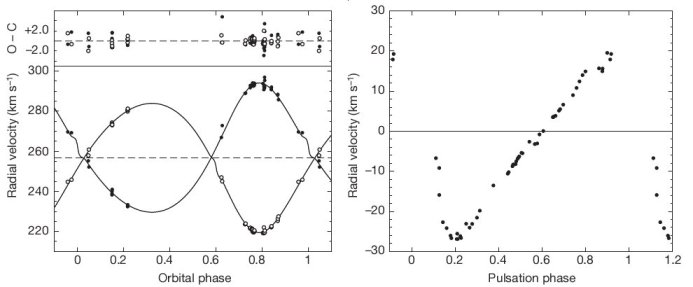OGLE-LMC-CEP-0227: the First Precisely Weighed Classical Cepheid
OGLE-LMC-CEP-0227 is a classical Cepheid in a well detached, double-lined eclipsing binary in the Large Magellanic Cloud, discovered by the OGLE survey (Soszyński et al., 2008). Precise OGLE-III photometry and spectroscopic observations collected with the Magellan 6.5-m telescope and MIKE spectrograph at Las Campanas Observatory, Chile and HARPS spectrograph attached to the 3.6-m ESO telescope at La Silla, Chile allowed the mass determination of the Cepheid component in the the system with accuracy of about 1%.
This is the first determination of the dynamical mass of a classical Cepheid with unprecedented accuracy. The result implies that the pulsation theory correctly predicts masses of classical Cepheids - showing the winner of the longstanding pulsation-evolutionary mass problem of classical Cepheids.
The details can be found in the paper: G. Pietrzyński, I.B. Thompson, W. Gieren, D. Graczyk, G. Bono, A. Udalski, I. Soszyński, D. Minitti and B. Pilecki 2010, Nature, 468, 542. (arXiv:1011.xxx).

Left: OGLE-III light curve of the OGLE-LMC-CEP-0227 system after removing Cepheid variability. Right: Light curve of the Cepheid component.

Left: OGLE-III radial velocity curve of the OGLE-LMC-CEP-0227 system after removing Cepheid pulsational RV changes. Right: Radial velocity curve of the Cepheid component.

Finding chart for the OGLE-LMC-CEP-0227 system (RA=4:52:15.70, DEC=-70:14:31.3, J2000.0). The size of the I-band subframe is 60×60 arcsecs. North is up and East to the left.
 back
back